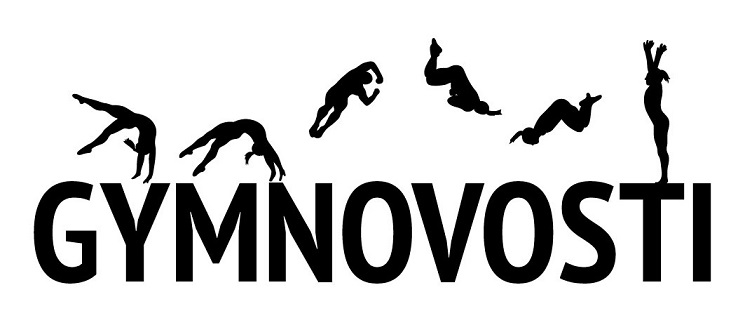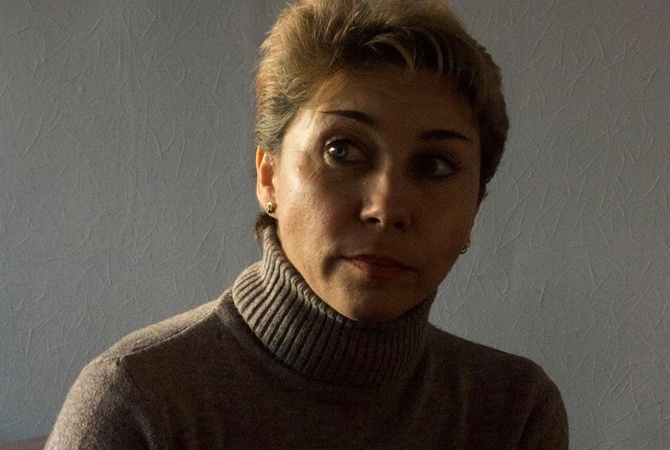Olga Strazheva had a short but very memorable international career. She is a World and Olympic champion as a part of the Soviet team and Worlds bars and all-around bronze medalist. At the 1988 Olympics, Strazheva suffered an ACL tear while competing on beam. She retired at 17 due to injuries and is currently working as a gymnastics coach in Ukraine. KP.ua talked to her about her career and the current state of Ukrainian gymnastics.
Q: You had a very dramatic but not very long career. How many years did you spend in elite gymnastics and how did you start doing gymnastics?
A: I’ve been on the national team for about five years, from 1985 to 1990. How did I start… Coaches came to my kindergarten, they selected the kids there. My parents didn’t have a goal to make me an athlete.
Q: You once said that originally you just trained for yourself and didn’t think about any big goals.
A: A five-year-old kid isn’t thinking much. Although, in 1980, when I was eight, I was watching the closing ceremony of the Moscow Olympics. I remember Mishka flying away, I cried. And I really wanted to go to the Olympics. I guess this had already been my goal then.
Q: The summer Olympics in Seoul took place in the fall. Did you go to school on the first of September?
A: No. In 1988, I started 10th grade, we were studying in Moscow. The teachers came to the training center three times a week and taught us from 8 pm to 10 pm. Before that, we had three practices, then we needed to get dinner and visit the medical center because everyone had injuries – a pain in the leg or in the back, or someone needed a shot for something, and only then we went to study. The girls were so exhausted by the evening,
Q: The peak of your career was during teenage years, 14-16 years old. During that time, teens want to go out with friends, start first relationships. How was it for you?
A: You can’t really compare the old times and what happens now, it’s absolutely different. My only friends were the girls I trained with. Our school, back at home, had a class for athletes, 26 guys that played football and five girls that did gymnastics. In the morning, we trained, then, from 10 am, we had classes, then we went to the second practice around 2 or 2:30 pm. I came home every
Q: How did the training at the Olympics look? What was the routine?
A: For us, it was the hotel, the gym, the cafeteria. We didn’t see anything else. We didn’t go to the Olympics, we weren’t allowed to because it takes a lot of energy and emotions and we needed to save those. We were completely isolated in order not to spend energy on any outside stimuli. So, when people say that we went abroad and saw things…
Q: Does that mean that you traveled around the world and had not seen anything?
A: Same goes for the European and World Championships. If we had some time left, we could go out and see the city but that was it. And it wasn’t like now. We were followed by two men from the KGB and god forbid we took a wrong turn.
Q: Was KGB watching you really strictly? Was it the same for all the teams?
A: Yes, absolutely. It was the same for everyone.
Q: Are the current athletes guarded like that as well?
A: No.
Q: Is the situation calmer now?
A: Perhaps, it’s not calmer, it’s just different. The Iron Curtain had been lifted, the Union had broken up. At the time, when we went abroad, we were really feared. And we looked at things differently then.
Q: The trials for the Olympic team had two stages. Your performance had been uneven. Was there a risk not to make the team?
A: Yes. I did really well at one competition, but
Q: Gymnastics fans really love your floor set to Stravinsky. Do you remember how it was choreographed?
A: Actually, it was pretty difficult. It was choreographed by a ballet choreographer. What he originally planned for me was cut in half, if not more. One element of
Q: As I understand, you brought a different routine to Seoul, right?
A: I wasn’t able to show it there because I got injured.
Q: Can you tell more about the injury? How did it happen? Was it nerves or losing your focus?
A: I guess I got too nervous, I wanted to do my routine really well in order not to let the team down, I had a lot of responsibility on my shoulders.
Q: When did you realize that the Olympics were over for you? Right away or at the hospital.
A: Of course, right when I got injured and stayed under the beam because I couldn’t move – I was carried away.
Q: At the medal ceremony, the Soviet team had only five girls on the podium. Where were you at that moment? Were you watching on TV?
A: I wasn’t watching, I was at the hospital at that moment. The medal was later brought to me to the Olympic village.
Q: And who awarded it to you?
A: The girls brought it, they were given six medals. Of course, I was upset. But when I see my coach now, he says that main thing was that we made it to the Olympics. Because, at the time, to make the Olympic team was something unreal. It wasn’t like modern Ukraine, there were 15 republics and the level was very high. We didn’t just go there to compete or to place second or third. Our goal was gold, only gold.
Q: You were the first one to do a double front. Did many people repeat it after you?
A: Yes, generally, many did it. Then I had 1.5 flips into a roll out. It’s now banned in gymnastics because it’s very dangerous. Some gymnasts were paralyzed and one or two died, I think.
Q: What was the most horrible thing you witnessed in gymnastics?
A: In front of my eyes, a gymnast crashed into the vaulting horse. It’s when you do a round-off to the springboard and then a back handspring onto the vaulting horse. If the girls miss the springboard with their legs, they crash into the horse head first. One girl crashed like that and broke her neck, she died.
Q: You retired at 17 years old. It’s early even for artistic gymnastics.
A: Even before the 1989 World Championships, I was supposed to be hospitalized, but I competed. After Worlds, I had a surgery and that was it. I tried to recover but couldn’t. I needed more time but at the moment, it was this way: if you can’t, someone else takes your spot.
Q: Are you still training?
A: Just exercising, to keep in shape, and not every day. I exercise if I want to. At first, I didn’t even want to step a foot in the gym, I didn’t want to see or hear anyone, nothing.
Q: How long, on average, is the career of an artistic gymnast? At what age do the women usually retire?
A: It’s all individual. Have you asked how old is Oksana Chusovitina? She’s 43. She’s still competing and preparing for her 8th Olympics. But it all depends on the body. When an athlete is on the national team, at the highest level of competitions, the body becomes worn down.
Q: Is elite sport healthy?
A: No, because with time, all the injuries resurface again.
Q: After retirement, many successful Soviet athletes moved abroad. You lived in Germany, right?
A: I worked at a circus there for about five years. It was a circus from Moscow.
Q: Wikipedia in English says that you performed there together with your daughter.
A: No, she just traveled there with me, she didn’t perform.
Q: Your daughter was also a gymnast, but a rhythmic one. Why not artistic gymnastics?
A: At the time, everything collapsed, there were no coaches. I wanted her to do artistic gymnastics, it’s just there was no class for her to attend. She left the sport much earlier than me, when still in school. She didn’t like it that much, I guess she only did it because of her mom. Mom kept telling her: come on, go on! [laughs]
Q: You are the director of an artistic gymnastics school and a few years ago you staged a protest in front of the city hall with your gymnasts. What was the story?
A: We were thrown out of the gym and the gym was closed. I still don’t know who bought the building, it’s all in the dark. Ideally, it should’ve been given to the city because such a building should be owned by the state. We lost the school. Right now, the school is at the university’s gym. There are no proper training conditions here because we can’t place our equipment. We can’t assemble the floor on which our
Q: Are there any other gyms in the city?
A: There are no gyms, not even empty spaces we could take.
Q: You then met with the region’s governor, he wrote on his Facebook that he wouldn’t leave this issue without a solution.
A: Well, as you can see, he did. But this is still open until the end of February, I think. We were asked what we could suggest. They think that at this gym, it’s possible to do gymnastics classes at some hours and then fitness classes at other hours. But if we assemble our equipment, there won’t be any space for anything else. And it’s not clear if the management will agree to it. They need to earn money, after all.
Q: What do you think about the level of current women’s artistic gymnastics in Ukraine?
A: It’s very bad. We didn’t participate [as a team] at the last two Olympics. We can’t qualify. In order to qualify, you need youth sports and certain conditions. How can someone make the national team if they have no equipment to train on? And qualified coaches leave. What is left for them here? They get jobs and conditions abroad, that’s it. I went to the Ukrainian Championships last year. The level has greatly decreased: first, in terms of the number of kids, second, in terms of difficulty. 30 years ago, we had more difficult routines at the regional championships.
Support Gymnovosti on Patreon from only $1 a month and help us bring to you even more awesome gymnastics coverage!
Buy cool gymnastics-themed t-shirts, hoodies, pillows, phone cases, and more at our store on Teepublic!





What an absolutely incredible interview! I enjoyed it so much!!! 💗